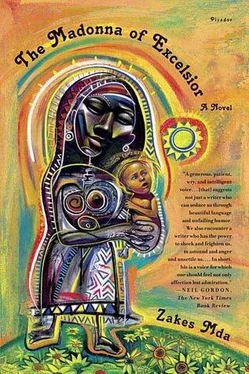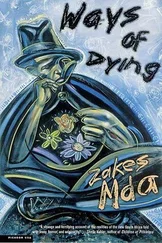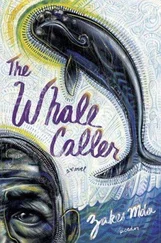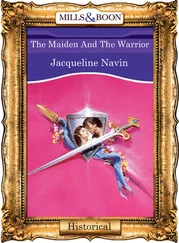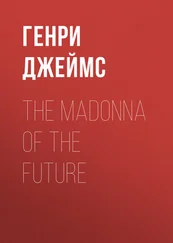Zakes Mda
The Madonna of Excelsior
On 10 May 2000, together with a phalanx of my daughters, I visited Father Frans Claerhout at his studio in Tweespruit, Free State. I had always wanted to meet him. He had mentored some artist friends of mine, James Dorothy in particular. Claerhout presented me with a book on his work written by Dirk and Dominique Schwager. But first he painted a golden bird on the black flyleaf and signed his name. I dedicate this novel to the bird .
1. WOMEN, DONKEYS AND SUNFLOWERS
A THESE THINGS flow from the sins of our mothers. The land that lies flat on its back for kilometre after relentless kilometre. The black roads that run across it in different directions, slicing through one-street platteland towns. The cosmos flowers that form a guard of honour for the lone motorist. White, pink and purple petals. The sunflower fields that stretch as far as the eye can see. The land that is awash with yellowness. And the brownness of the qokwa grass.
Colour explodes. Green, yellow, red and blue. Sleepy-eyed women are walking among sunflowers. Naked women are chasing white doves among sunflowers. True atonement of rhythm and line. A boy is riding a donkey backwards among sunflowers. The ground is red. The sky is blue. The boy is red. The faces of the women are blue. Their hats are yellow and their dresses are blue. Women are harvesting wheat. Or they are cutting the qokwa grass that grows near the fields along the road, and is used for thatching houses. Big-breasted figures tower over the reapers, their ghostly faces showing only displeasure.
People without feet and toes — all of them.
These things leap at us in broad strokes. Just as they leapt at Popi twenty-five years ago. Only then the strokes were simple and naïve. Just a black outline of figures with brown or green oil paint rubbed over them. Men in blankets and conical Basotho hats pushing a cart that is drawn by a donkey. Topless women dancing in thethana skirts. Big hands and big breasts.
That is one thing that has not changed, for Father Frans Claer-hout is still a great admirer of big hands and big breasts. He is, after all, still the same trinity: man, priest and artist. The threeness that has tamed the open skies, the vastness and the loneliness of the Free State.
Twenty-five years ago Popi peered from her mother’s back at the white man as he warmly and masterfully daubed his broad strokes. At five she was precocious enough to wonder why the houses were all so skewed. And crowded together. She thought she could draw better houses. Her people, those she sketched on the sand in the backyard of her township home, were not distorted like the priest’s. They were matchstick figures with big heads and spiky hair. But they were not distorted. Yet his very elongated people overwhelmed her with joy. She saw herself jumping down from her mother’s back and walking into the canvas, joining the distorted people in their daily chores. They filled her with excitement in their ordinariness.
“Popi, we must go now,” her mother said.
“Awu, Niki, I am still watching,” appealed Popi. She always called her mother by the name that everyone else in the township used.
“The Father has no use for me,” said Niki as she walked out of the gate of the mission station. Popi was sulking on her mother’s back. She had wanted to stay with the distorted people in their skewed houses.
“We cannot waste time with your silliness,” said Niki.
She had a long way to go. She was going to hitch-hike all the way back to the black township of Mahlatswetsa in Excelsior, thirty kilometres from the Roman Catholic mission in Thaba Nchu. Traffic was sparse on these roads. She knew that she would have to walk for miles before a truck would stop to give her a lift. Truck-drivers were really the only people who felt sorry for hitchhikers.
But trucks were few and far between on these provincial roads. She would have to walk for miles with only cosmos, the qokwa grass and sunflowers for company. Popi would be fast asleep on her back.
Although her visit to Thaba Nchu had not been a success, she was grateful that the priest had given her a few coins for her trouble. But she was disappointed that he had no use for her. She had heard from the women of his congregation that he painted naked women. In all the neighbouring townships and villages, women walked out of their skewed houses to pose in the nude for him. He paid his models well. Niki had hoped that she would also be able to pose for him.
But the priest had no need of a model. He was not in his nudes-painting mode. He had a few canvases of distorted people and skewed houses and donkeys and sunflowers to complete. Then, in a few weeks’ time, he would be painting the madonna subject. If Niki and Popi could come back then, he certainly would use them as models.
The priest was captivated by Popi. He loved all children. Even those who were emaciated and unkempt. Though Popi stayed on Niki’s back all the time they were in his studio, he played with her, making all sorts of funny faces. Then he tore out a page from a magazine and shaped her a donkey. He gave it to her and pranced around the room, braying like a donkey. The stocky trinity with his broad face and snow-white mane brayed and brayed, and Popi laughed and laughed.
All this time Niki was nervous. She knew that the priest must have been wondering why Popi was so different from other children. Why she was so light in complexion. Why her eyes were blue, and why she had flowing locks.
We who know the story of Excelsior do not wonder.
As Niki trudged the black road until she became one with it, Popi’s mind wandered back to the man who loved women, donkeys and sunflowers. And to his creations.
Woman and girl melted into God’s own canvas.
POPI TELLS US that it all began when the trinity was nourished by Flemish expressionists. Theirs were ordinary subjects: sympathetic men and women living ordinary lives and performing ordinary rituals. Popi knows all these things, and shares them with all those who care to listen. We suspect that there are many other things that she knows, but keeps to herself. And there are others that she has decided not to remember.
Twenty-five years ago she saw the thin outlines that defined the concertina player and the dancers. At the time she knew nothing about Flemish expressionists. She had not experienced, through the broad pages of colourful coffee-table books, their mystique that embodied protest.
She was only five. And she was with Niki.
The strokes were not broad like today’s strokes. The trinity had not started with broad strokes. They got thicker and rougher as he became more comfortable in his own style. The strokes Popi saw did not stand out. The surface was smoother. The finish was grainy. The colours were fruity. Thick fingers like bunches of bananas pressed the concertina keys. White and brown strokes marked the folds of the instrument as it breathed heavily in and out.
The musician’s hat was an overripe tomato. Brown hair peeped under the brim. He was intent. The song had drawn his eyes into his skin, and they had become brown slits. His long nose was sunburnt. He squeezed the concertina. It squealed. Men and women danced. Full-figured women in Starking apple dresses. Skirts of golden pears and Granny Smiths. Pink blouses. Out-of-step men in brown hats and brown suits. Or in light blue shirts and green pants. Sleepy-eyed men with big groping hands.
The musician squeezed the instrument and it wailed a graceful wals. Men and women floated on the clouds. Then he squeezed a lively vastrap. Quicker, quicker than the wals. He was playing Japie Laubscher’s Ou Waenhuis , the famous composition about an old barn. The zestful party danced in a circle. The men’s arms were around the women’s waists. The women’s arms were around the men’s shoulders. Feet close together, turning on the same spot in a fast tiekie-draai.
Читать дальше
